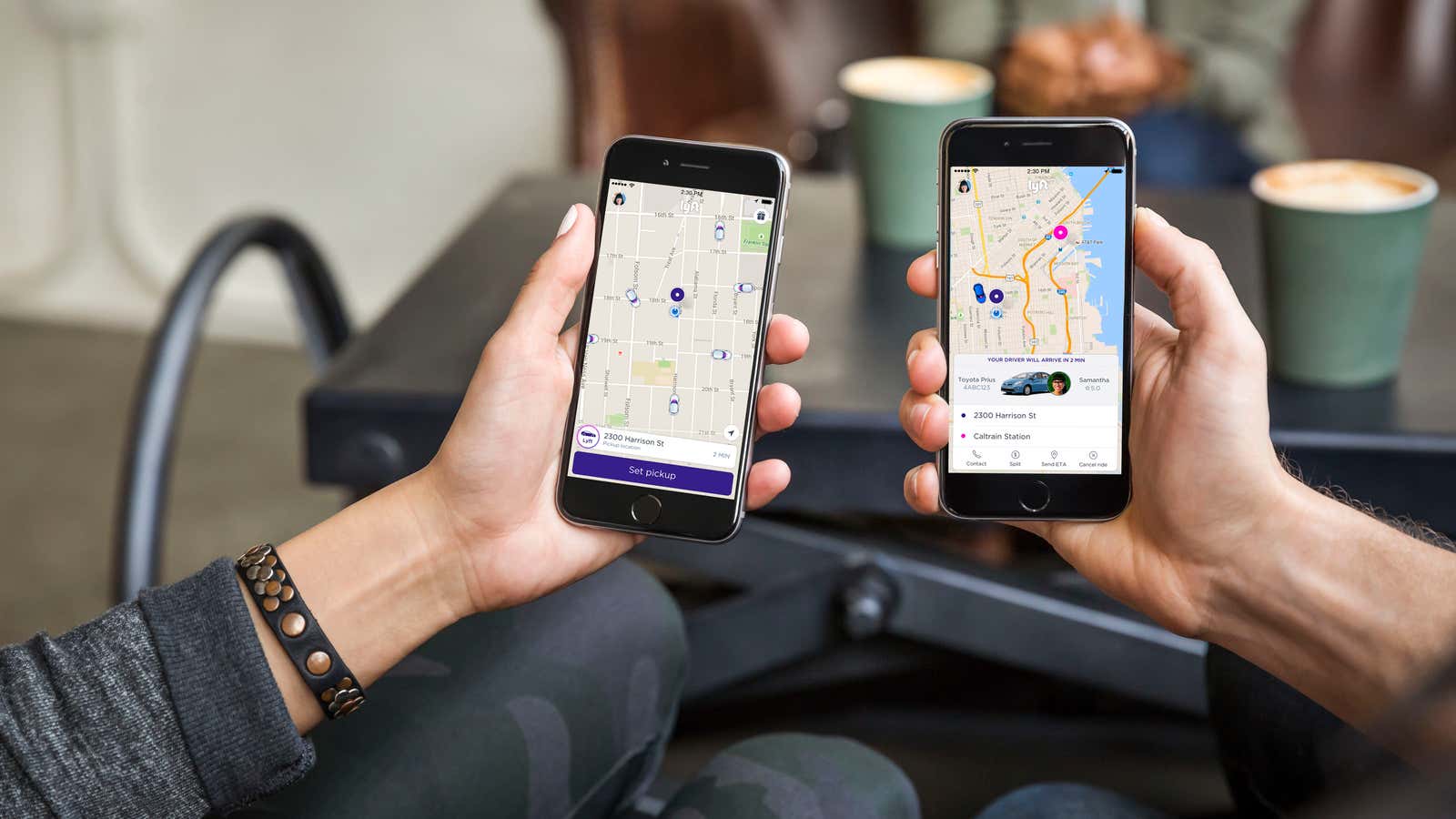Lyft has finally tossed its hat into the self-driving car race. Last Friday, the company announced plans to open its own self-driving division.
Other companies are driving toward a fully autonomous fleet, but Lyft said it “will always operate a hybrid network, with rides from both human-driven and self-driving cars.” While its autonomous technology ramps up, the company will use human drivers to fulfill ride requests for routes that can’t be served by a driverless car. Over time, the company also plans to transition human drivers from traditional rides to more service-oriented rides, such as family and elder care, or cafe on wheels. Because of these extended services, Lyft believes that its introduction of autonomous vehicles won’t reduce the number of its human drivers, a company spokesperson said.
Lyft says more self-driving cars will reduce the number of vehicles on the road, resulting in less pollution and congestion, but it’s not clear how the company is doing the math. If it intends to keep its human drivers—and their jobs—and increase the number of self-driving cars, isn’t that a net increase in cars? Lyft vp of engineering Luc Vincent wrote in Friday’s announcement: “[Self-driving cars] will also mean 80% fewer vehicles on the road — opening up more space for all of us in our cities and communities…[and] dramatically reduc[ing] pollution and greenhouse gas emissions.”
Perhaps the calculation works if autonomous cars displace personal vehicles, but the goals are undoubtedly ambitious. Last October, Quartz’s Mike Murphy brought up a similar line of questioning when he talked with Lyft’s president and co-founder John Zimmer. “The details will continued to be worked out,” Zimmer said then. It seems like that’s still the case.
